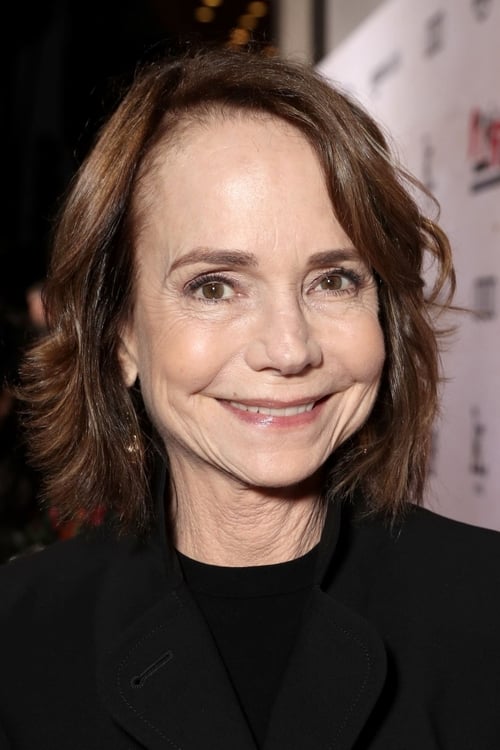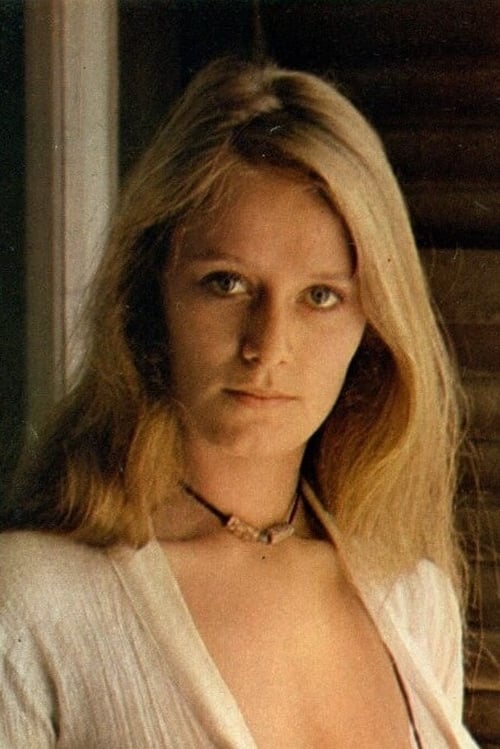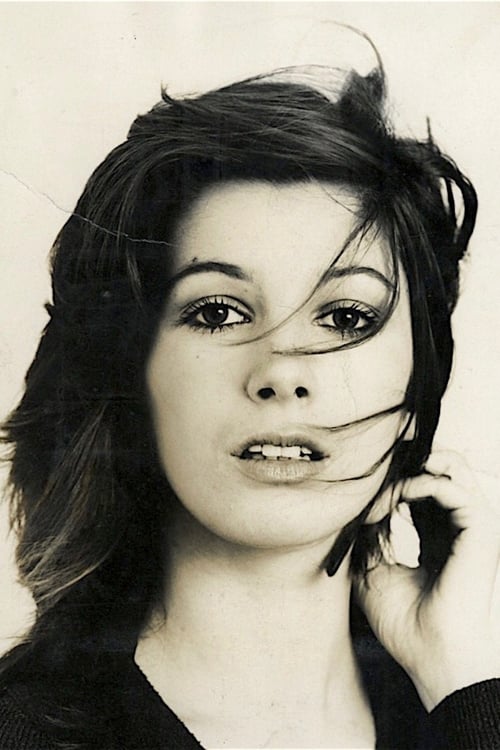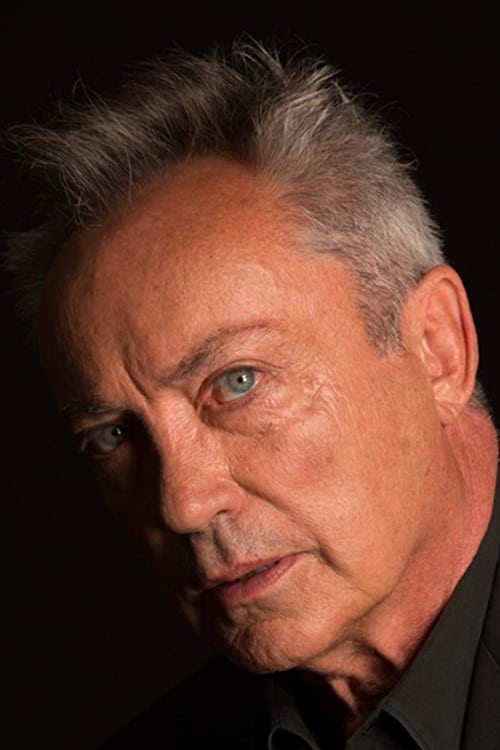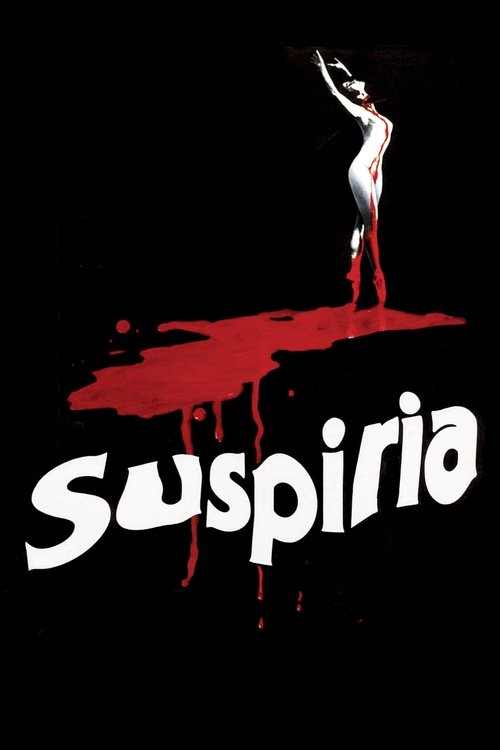
Suspiria
An American newcomer to a prestigious German ballet academy comes to realize that the school is a front for something sinister amid a series of grisly murders.
Dialogues from Movie Suspiria
Quotes from Movie Suspiria
Sound Tracks from Suspiria by Goblin
Suspiria
Suspiria by Goblin, Main theme of the movie
Witch
Witch by Goblin, Played during key scenes involving witchcraft
Sighs
Sighs by Goblin, Used in dramatic moments throughout the film
Download App
Memorable Scenes from Movie Suspiria
Patricia's Revelation
In a dimly lit room, Patricia warns Susie about the sinister forces at play in the dance academy. Frightened and trembling, she reveals visions of witchcraft and betrayal. Her frantic tone and desperate eyes intensify the atmosphere, foreshadowing the horrors to come.
Context: This moment sets the stage for Susie's journey, making the audience aware of the underlying danger and mystery surrounding the dance academy.
The Dance Audition
Susie's passionate audition showcases her talent, but it quickly escalates into a nightmare as the instructors' harshness turns physical. The split between beauty and brutality manifests as she dances, embodying both grace and terror. The music transforms into something haunting, paralleling her anxiety.
Context: This scene highlights Susie's determination and vulnerability, establishing her as a relatable protagonist lost in a malevolent environment.
The Murder of Patricia
Patricia's ominous fate unfolds in a chilling scene. As she seeks refuge, the camera peers through the cracks of the walls, adding a voyeuristic layer. The sudden violence is both shocking and surreal, leaving viewers gasping as her fate leaves a chilling silence hanging in the air.
Context: Patricia’s gruesome demise underscores the danger within the academy and raises the stakes for Susie, propelling her deeper into mystery.
The Witch's Dance
During a horrifying sequence, Susie witnesses the instructors performing a ritualistic dance. The choreography is mesmerizing yet disturbing, blending beauty and cruelty in a way that leaves viewers captivated and unsettled. Powerful music drives the scene, amplifying the tension.
Context: This pivotal moment reveals the dark secret behind the academy, emphasizing the themes of manipulation and the clash between innocence and malevolence.
Susie's Nightmare
Susie experiences a vivid nightmare that brings her fears to life. The imagery is surreal and disturbing, effectively mixing reality with her subconscious. The haunting score creates an oppressive atmosphere, making the audience feel her terror and confusion.
Context: This inner turmoil deepens the audience's understanding of Susie’s character, accentuating her struggle against the forces she inadvertently became a part of.
Markos’ Revelation
In a shocking moment, Susie learns the truth about Madame Blanc and the witches. The visual transformation of the witches adds a layer of horror as the shocking reality sinks in. The surreal visuals and low lighting create a sense of dread, grasping the audience's attention.
Context: This revelation marks a significant turning point in the story, solidifying Susie's role in this dark sorority, and emphasizing themes of power and betrayal.
The Death of Sara
Sara's tragic end is emphasized by the disorienting visuals and jarring sound design, amplifying the horror of her demise. This moment forces Susie to confront the extent of the evil lurking within the dance academy, impacted by its tragic consequences.
Context: Sara’s death cements the academy’s danger, pushing Susie closer to confronting her own destiny and highlighting the theme of friendship and loss.
The Vault
Susie uncovers a hidden vault that contains dark secrets of the academy. The blend of eerie visuals and oppressive silence intensifies the atmosphere. When she opens it, the contents manifest her deepest fears, leading to an emotional revelation.
Context: This scene signifies a critical moment of discovery, revealing the extent of treachery and further personalizing Susie’s struggle against the evil forces.
The Final Dance
In the closing moments, Susie's final dance becomes an explosive blend of strength and defiance. It serves as her catharsis, where she fully embraces her identity and power. The music swells, creating a euphoric yet alarming crescendo.
Context: This marks Susie's transformation from a naive girl to a commanding presence. It embodies the film’s primary themes of liberation and resistance against overwhelming darkness.
Madame Blanc's Manipulation
In a tense confrontation, Madame Blanc reveals her true intentions while manipulating Susie. The dialogue is laced with sinister undertones, capturing the sense of control and fear. The emotional weight of betrayal is palpable, leaving the audience on edge.
Context: This clash highlights the power dynamics within the academy, emphasizing the dangerous allure of ambition that many characters fall prey to.
The Transformation
As Susie finally transforms into the vessel for the witches, the grotesque visuals are accompanied by a haunting score that captures the duality of horror and beauty. This moment lingers in the viewer’s mind long after it ends, leaving them horrified yet captivated.
Context: Her transformation embodies the narrative's themes of sacrifice and the loss of innocence, marking Susie as a complex character trapped in a cruel fate.
The Collapse of the Academy
The academy crumbles in chaos as Susie's power is unleashed. The imagery is surreal, with flames and shadows intertwining, symbolizing destruction and rebirth. This visual spectacle captures the despair of its victims while showcasing Susie’s liberation.
Context: This catastrophic climax represents the culmination of the struggle between good and evil, bringing the themes of empowerment to a dramatic conclusion.
The Tension Between Susie and Dr. Klemperer
A pivotal conversation unfolds between Susie and Dr. Klemperer, filled with emotional depth. Their dialogue reveals Susie's past and her motivations, providing insights into her character while also heightening the inherent tension between them.
Context: This moment illustrates the contrasting perspectives on empowerment and vulnerability, expanding the film’s exploration of authority and victimization.
The Reveal of the Hidden Past
Susie's discovery of a hidden room unveils the dark history of the academy, filled with haunting remnants of previous students. The emotional weight of the scene lays bare the destructive legacies of ambition and consequence.
Context: This revelation adds layers to the narrative, deepening the mythos of the academy while underscoring the tragic stories of those lost to power.
The Haunting Voice
An unseen voice echoes throughout the academy, beckoning Susie. The use of sound heightens the tension, creating an ethereal quality that envelops the audience in a sense of unease and anticipation.
Context: This moment encapsulates the theme of the unseen forces at play, reinforcing Susie's growing entrapment in the malevolent world surrounding her.
The Dance Rehearsal Incident
During a seemingly mundane dance rehearsal, a traumatic incident occurs, causing chaos among the dancers. The sharp contrast between beauty and horror epitomizes the film's eerie aesthetic and punctuates the escalating tension.
Context: This incident serves as a catalyst for the characters’ unraveling, illustrating how horror can infiltrate even the most elegant of settings.
The Visions Return
As the nightmare visions return, Susie faces her past once more. The haunting imagery is interwoven with her present reality, reflecting her inner turmoil and struggle against the forces manipulating her destiny.
Context: This moment highlights the psychological themes of the narrative, emphasizing how trauma can haunt and shape one's identity.
A Storm of Emotions
A storm brews outside as Susie prepares for her final dance. The raging winds outside mirror her internal conflict, blending nature with emotion to create an atmosphere ripe with tension and intensity.
Context: This builds anticipation for the emotional climax, using the storm as a metaphor for the chaos of her surroundings and her own mind.
The Confrontation
In a final confrontation, Susie faces Madame Blanc and the witches. The air is thick with tension and defiance, creating a standoff filled with raw emotion and desperation, amplified by the strong visuals and scoring.
Context: This crucial moment showcases the culmination of Susie's growth, as she embraces her power while confronting the very forces that sought to control her.
The Aftermath of the Academy
After the chaos subsides, the remnants of the academy are stark and haunting. The silence is deafening, leaving a lingering sense of loss. The everyday world re-emerges, contrasting with the horrors that occurred within.
Context: This moment signals the end of one chapter and the emergence of new beginnings, encapsulating the film’s themes of survival and resilience in the face of malevolence.
Download App


